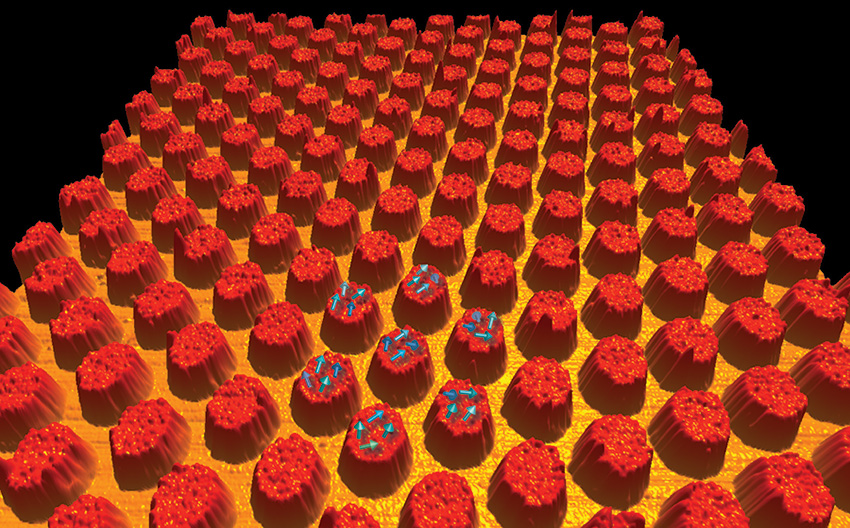Tailored Materials Containing Superconductor Islands May Lead to Improved Electronic Materials
Arrays of superconducting islands open up the possibility for tailor-made properties and functionality.

The Science
Arrays of physically separated niobium islands placed on gold films have been fabricated and shown to enable novel, highly tunable superconducting and metallic states. These systems can be used to enhance our understanding of a variety of inhomogeneous materials.
The Impact
This development may lower the barriers to broader use of high temperature superconductors on the grid, magnetic chains in electronics, and for applications of other inhomogeneous materials. Designing geometrical arrays of superconducting islands allows for better modeling of the mechanisms behind the properties of these technologically important materials.
Summary
Superconductors conduct electricity without efficiency losses, and have potential applications for the electric grid and other energy uses. In this research, supported by BES at the University of Illinois at Urbana-Champaign, researchers fabricated arrays of superconducting niobium islands on gold films and measured the temperature-dependence of the electrical resistance as a function of island separation. The results demonstrated that the long-range connectivity between the islands occurs in a way that cannot be explained by current theories. For example, at large island spacing the system seems to systematically approach a zero-temperature metallic state, which cannot be explained by the conventional theory of metals. These results may also explain the appearance of anomalous zero-temperature metallic states in other materials, such as some semiconducting and superconducting thin films. The ability to tune the superconducting properties of the island system through island geometry, spacing, material properties and disorder provides a new way to investigate similar inhomogeneous correlated materials and may open new avenues to design material systems with desired functionality.
Contact
Prof. Nadya Mason
University of Illinois at Urbana-Champaign
nadya@illinois.edu
Funding
Basic Research: Primarily supported by the Office of Science’s Basic Energy Sciences (BES) program. A portion of the theoretical work was supported by the National Science Foundation.
Publications
S. Eley, S. Gopalakrishnan, P.M. Goldbart, and N. Mason, “Approaching Zero-Temperature Metallic States in Mesoscopic Superconductor-Normal Metal-Superconductor Arrays,” Nature Physics 8, 59 (2012).
Related Links
http://physics.illinois.edu/news/story.asp?id=1468
Highlight Categories
Performer: University



